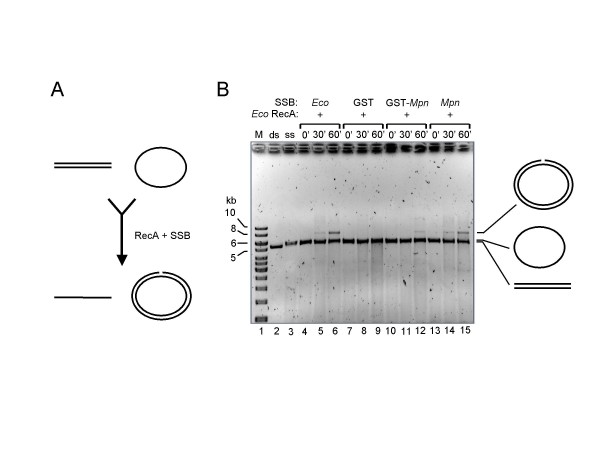Figure 5.
Mpn SSB promotes E. coli RecA-catalyzed three-strand DNA transfer. (A) Schematic representation of the three-strand transfer reaction. E. coli RecA catalyzes the transfer of a single strand from a linear, double-stranded DNA donor molecule (at the top left) to a complementary, single-stranded, circular acceptor molecule (at the top right), resulting in a linear, single-stranded product (bottom, left) and a (nicked) circular, double-stranded product (bottom, right). This reaction is strongly promoted by the E. coli SSB protein. (B) E. coli RecA-promoted DNA strand transfer reactions using φX174 DNA. Reactions were performed at 37°C in the presence of either E. coli SSB (Eco SSB, lanes 4–6), GST (lanes 7–9), GST-SSB (GST-Mpn, lanes 10–12) or Mpn SSB (lanes 13–15). DNA concentrations used were 1 nM and 2 nM for the ssDNA and dsDNA, respectively. Reactions were terminated at either 0, 30 or 60 min of incubation (0', 30' and 60', respectively, above the lanes). The samples were separated on 0.6% agarose gels in 0.5 × TBE buffer. A black/white inverted image of an ethidium bromide-stained gel is shown. A schematic representation of the major DNA products is indicated at the right-hand side of the gel. The DNA marker (M) is the SmartLadder (Eurogentec). ds (lane 2), linear, dsDNA donor; ss (lane 3), circular, ssDNA acceptor.

